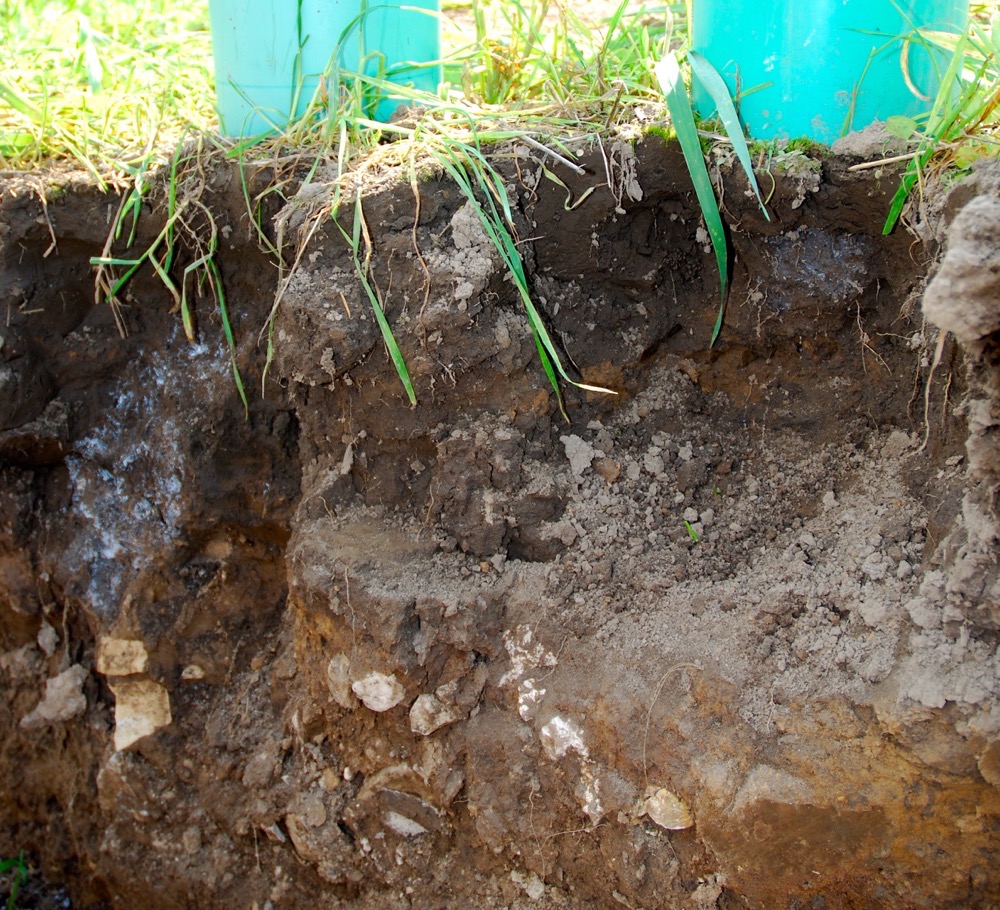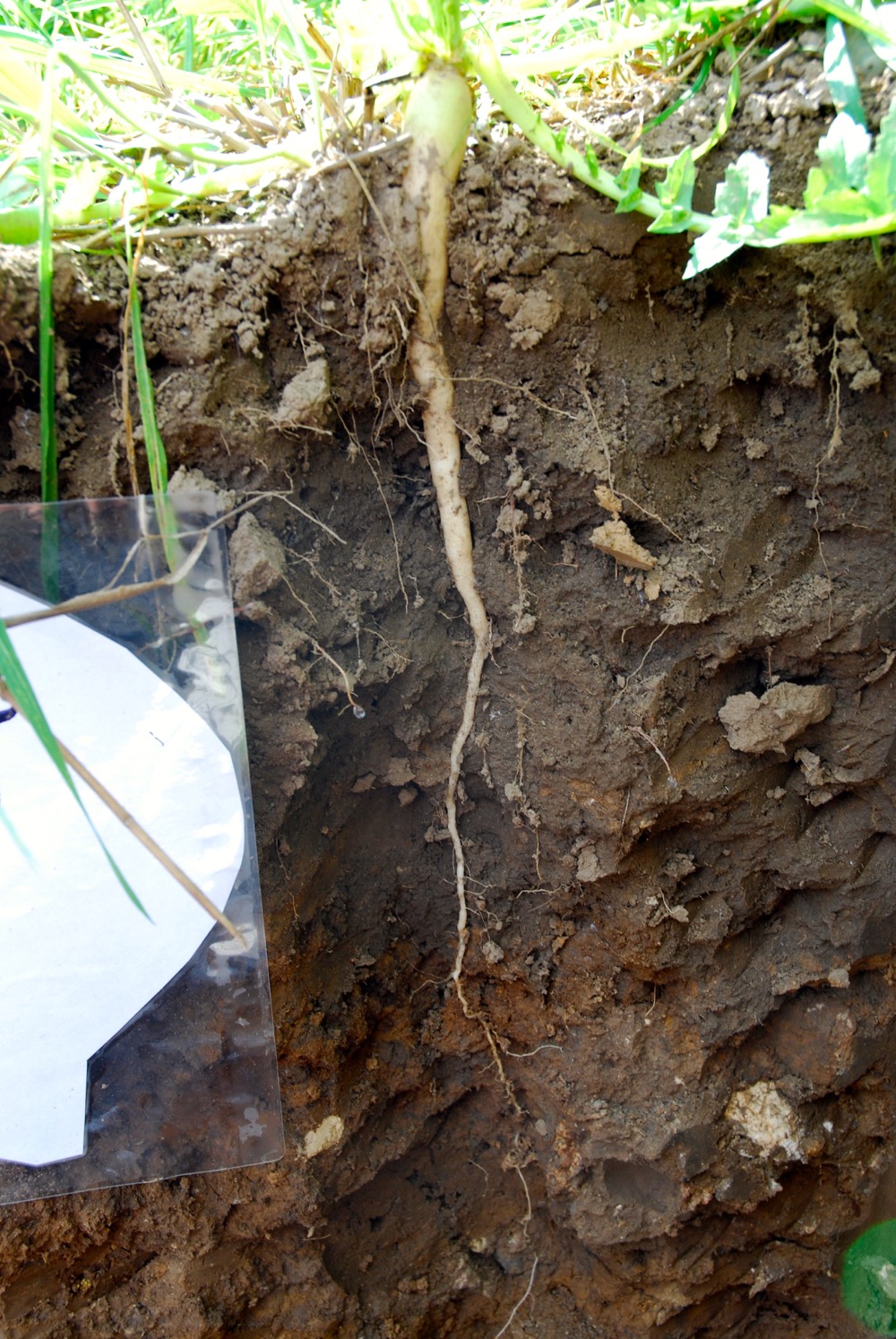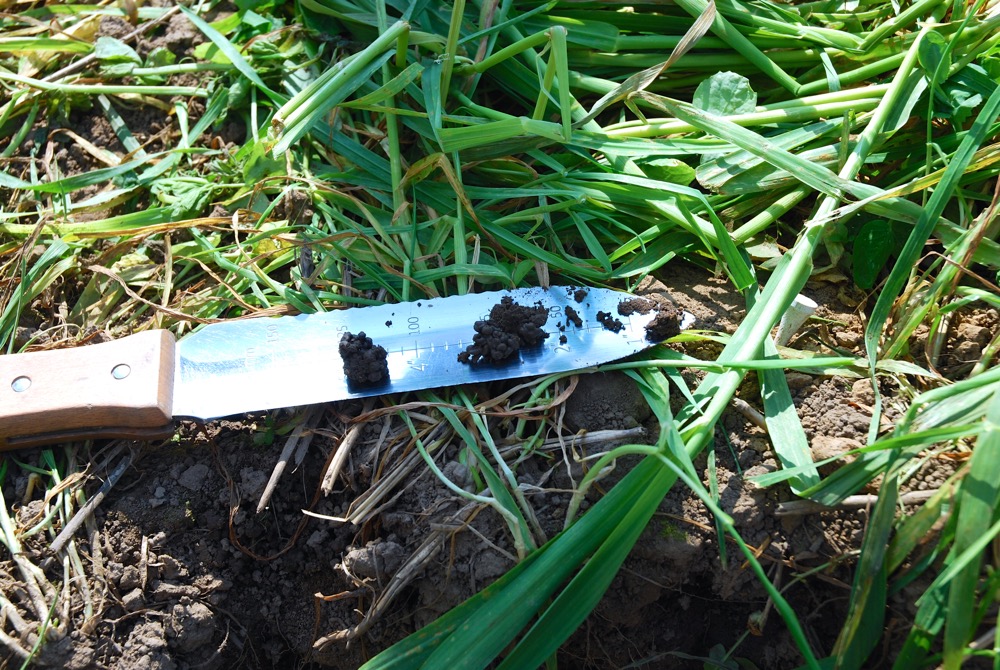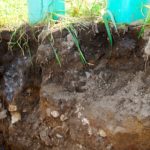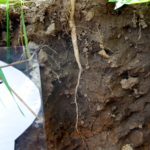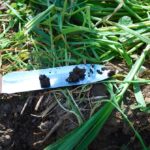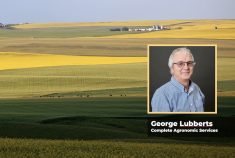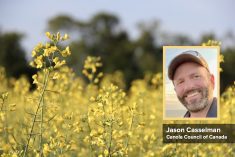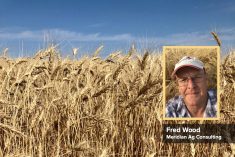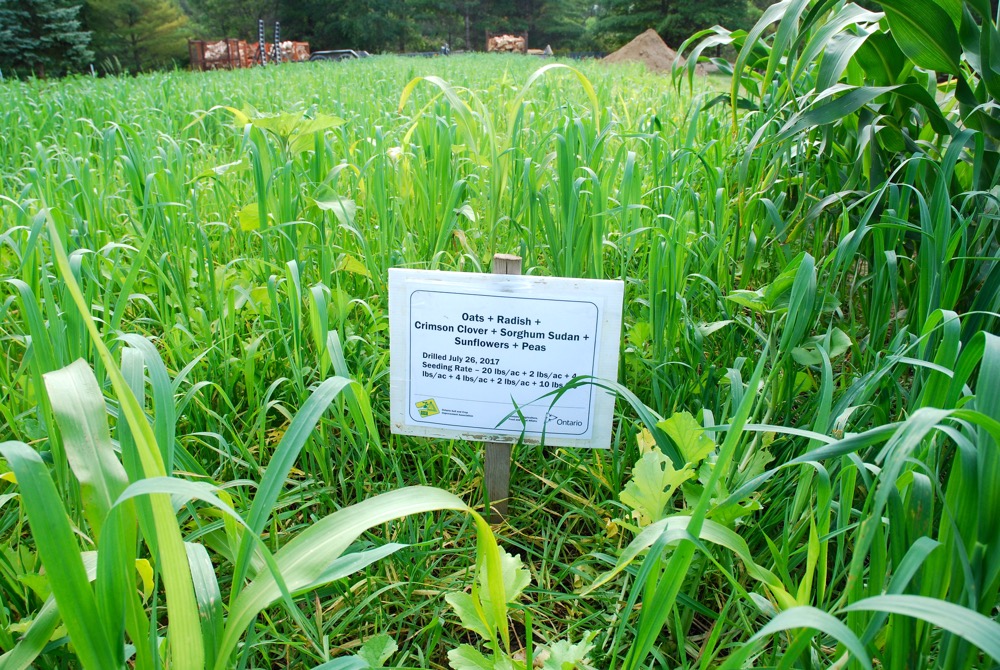
Sept-2017-Farm-Show-soil-pit-and-cover-crop-demo-digs-deep-multi-blend-cover-crop-rpearce
The cover crop plot with the most complex blend of different species, including planting dates, method and rates.
Photo: Ralph Pearce
Sept-2017-Farm-Show-soil-pit-and-cover-crop-demo-digs-deep-compaction-effect-rpearce
Compaction shows up below the drum on the right, including a plow pan (centre) versus infiltration of white liquid farther below the drum on the left.
Photo: Ralph Pearce
Sept-2017-Farm-Show-soil-pit-and-cover-crop-demo-digs-deep-depth-of-radish-taproot-rpearce
The taproot of a radish in the multi-species blend reaches down more than 12 inches.
Photo: Ralph Pearce
Sept-2017-Farm-Show-soil-pit-and-cover-crop-demo-digs-deep-worm-casts-rpearce
Some of the many worm casts found at various depths within the soil pit.
Photo: Ralph Pearce
Soil health has been a buzz phrase that’s gone from a whisper three to five years ago to a chorus that’s spreading across the agrifood industry.
That goes to show the swinging of the pendulum away from plowing and aggressive tillage — and it seems to be gaining more advocates with each passing day.
This year at Canada’s Outdoor Farm Show at Woodstock, Ont., the Ontario Soil and Crop Improvement Association and the provincial agriculture ministry hosted a demonstration combining a soil pit with cover crops.
Read Also

Could crop sharing be a viable option for your farm?
Crop sharing could be a good option for young and beginning farmers.
The soil pit offered a variety of visual indicators of healthy soil, including worm casts and channels, tap roots from one of the cover crop blends and a breakdown of various soil profiles.
A separate project, initiated by OSCIA, provided a look at the effects of compaction, using white-tinted water to show infiltration through two soil profiles: one a good, aggregated soil and the other, a tight, compacted soil. Even a well-developed plow pan was evident.
The display also gave visitors a chance to see five different cover crop stands, including red clover inter-seeded into winter wheat, oats, oats and Austrian peas, oats, radish and Crimson clover, and oats, radish, Crimson clover, sorghum, sunflower and peas.
Cover crops have been recognized as an ideal means of keeping soils active and growing as long as possible. They’re also favoured for adding organic matter and remediating soils that have been neglected through shorter rotations, heavy tillage and plowing.


